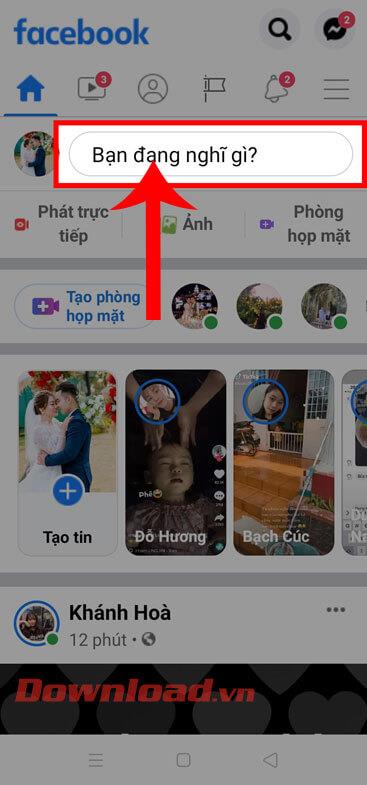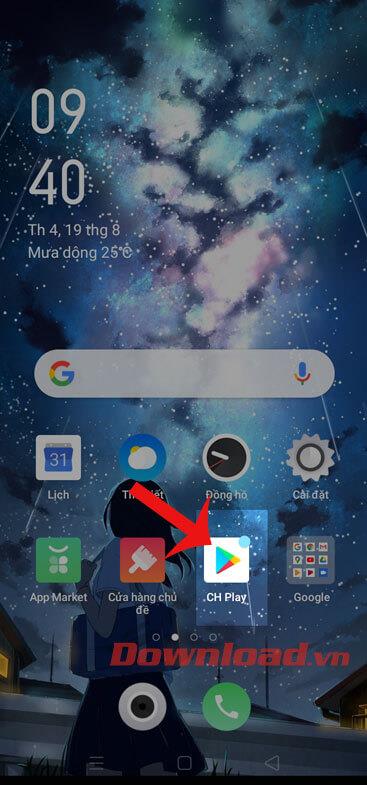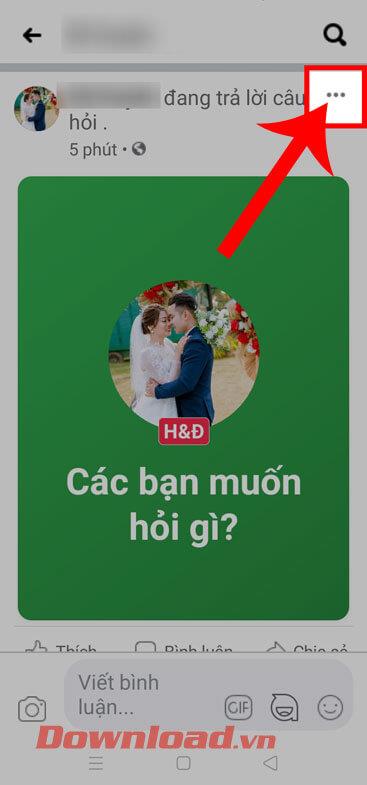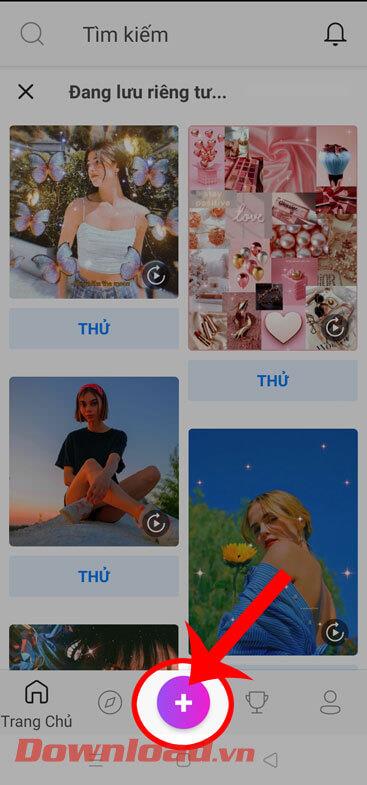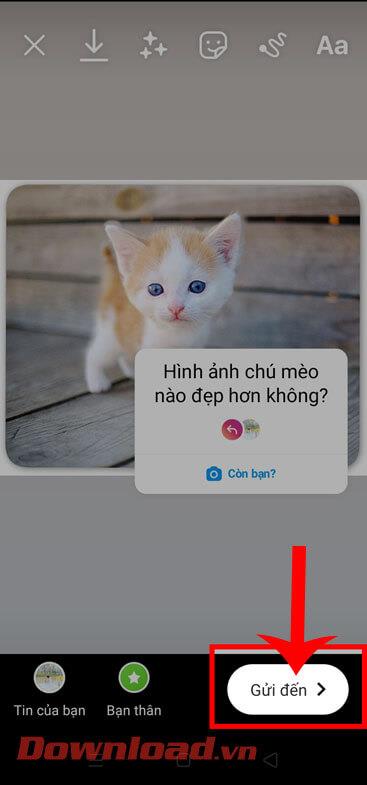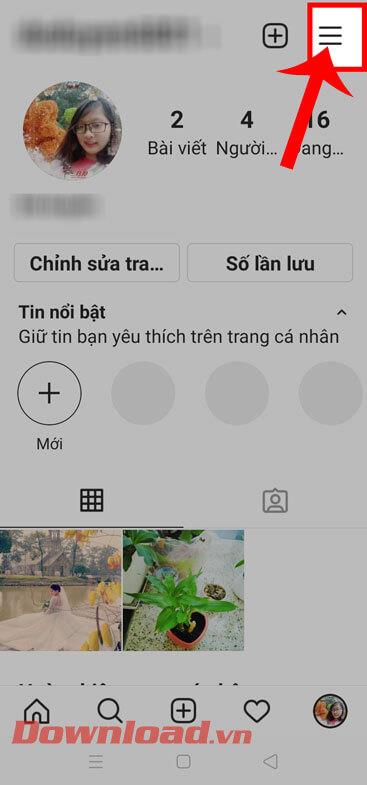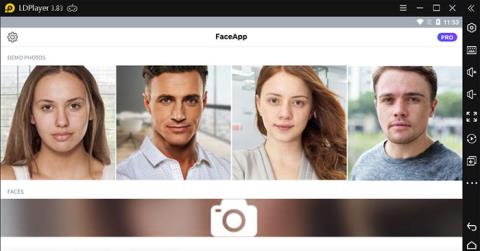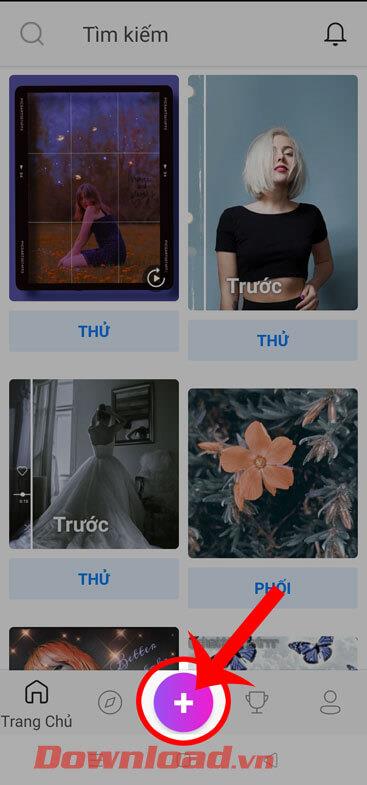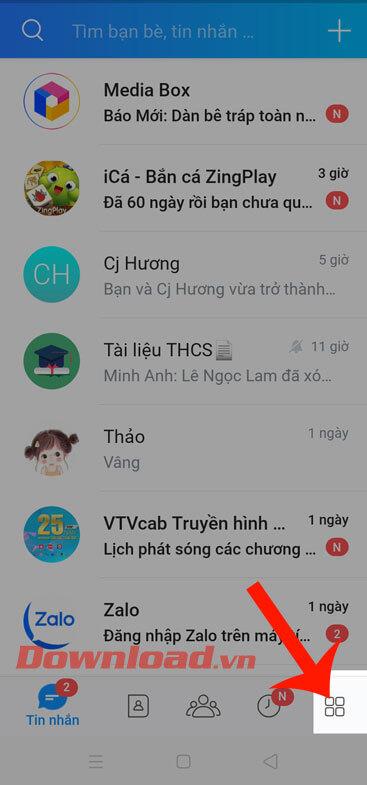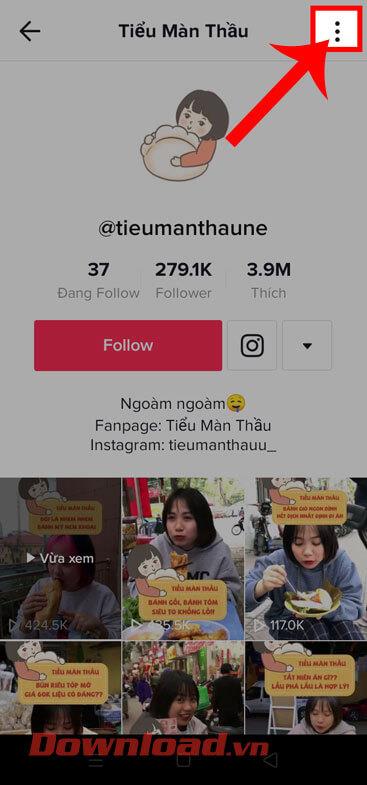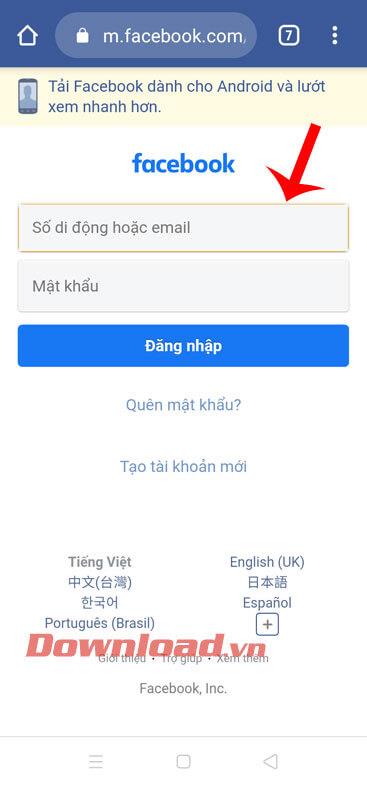How to pin comments on TikTok
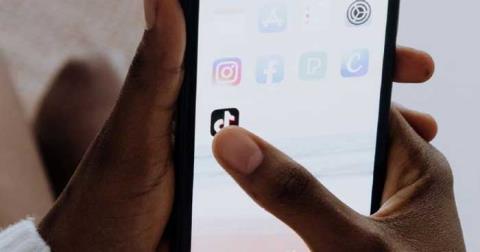
How to pin comments on TikTok, TikTok allows users to pin comments easily. Here's how to pin comments on TikTok videos.
When it comes to messaging, WhatsApp is one of our favorite clients on the market today. Outside of iMessage, WhatsApp seems to be the best application for combining the simplicity of texting with the advancements in modern-day instant messaging. It includes features like read receipts, typing indicators, and more.
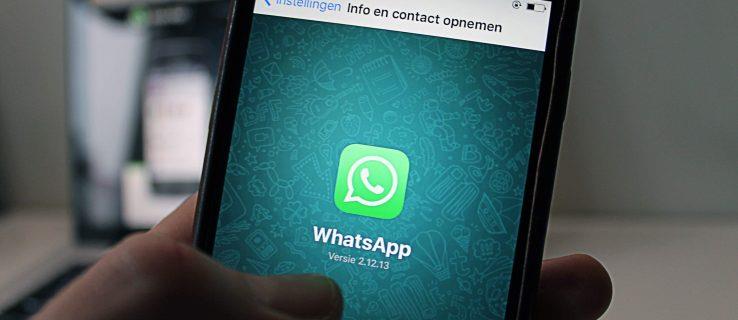
One of these features is the ability to see the last time someone was seen on the platform. Inside of WhatsApp, you can view the Last Seen status of anyone stored in the contacts of your device, which makes it really easy to view whether or not the person you want to message is active and online.
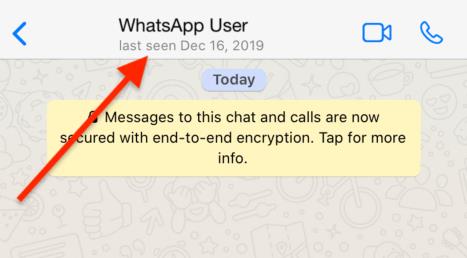
So, with that said, is there a way for WhatsApp users to hide their “last seen” status from people on WhatsApp? Perhaps unsurprisingly, for a Facebook-owned app, WhatsApp offers a wide variety of privacy options and settings, allowing for every WhatsApp user to customize their experience and to make the overall usage of the platform a bit more unique for every person on the platform. But where do you start? And what are your options for making things as private as possible? Let’s take a look inside of WhatsApp to find out.
How to Hide ‘Last Seen’ on WhatsApp
Fortunately, WhatsApp makes it really easy to hide your ‘Last Seen’ status from friends and profile visitors. Perhaps you don’t want someone to think you’re ignoring them, or you want to be left alone. Either way, we’ll show you how to hide your ‘Last Seen’ on an Android and an iPhone in this section.
Hide ‘Last Seen’ on an Android Device
Android users can easily hide their ‘Last Seen’ by following these steps:
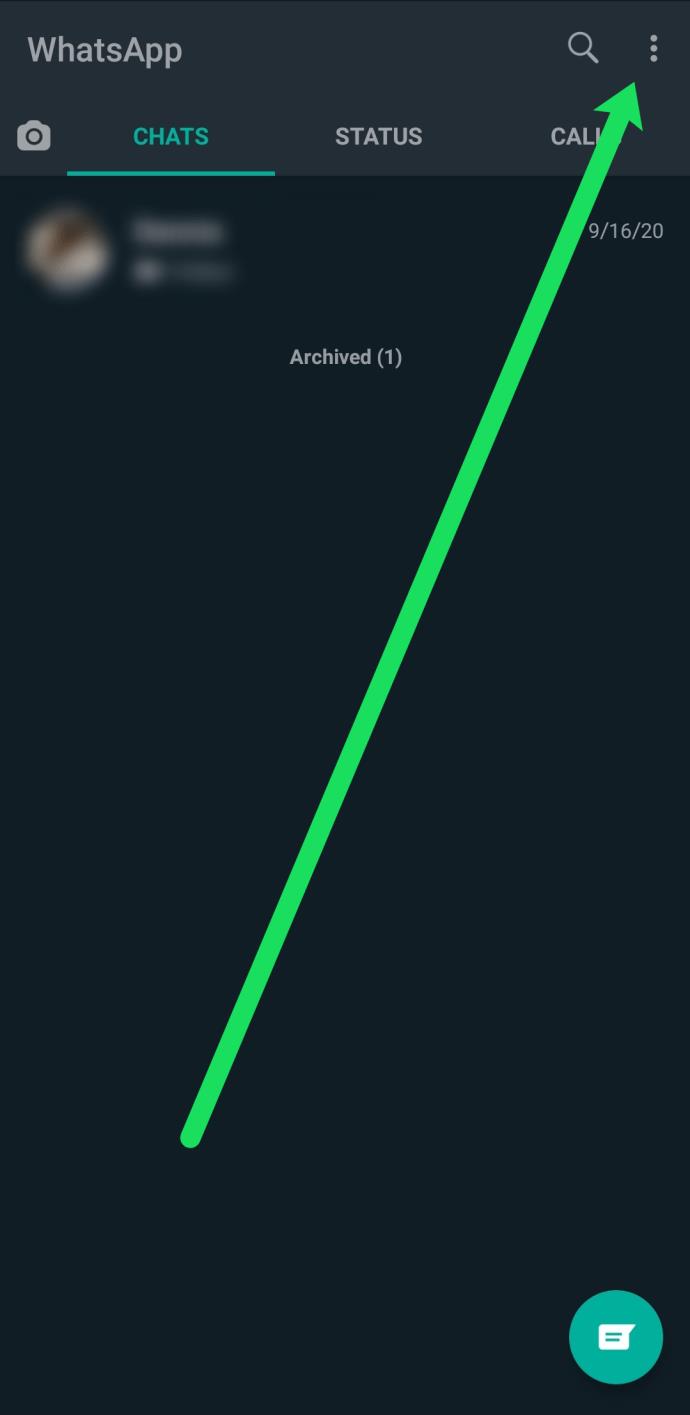
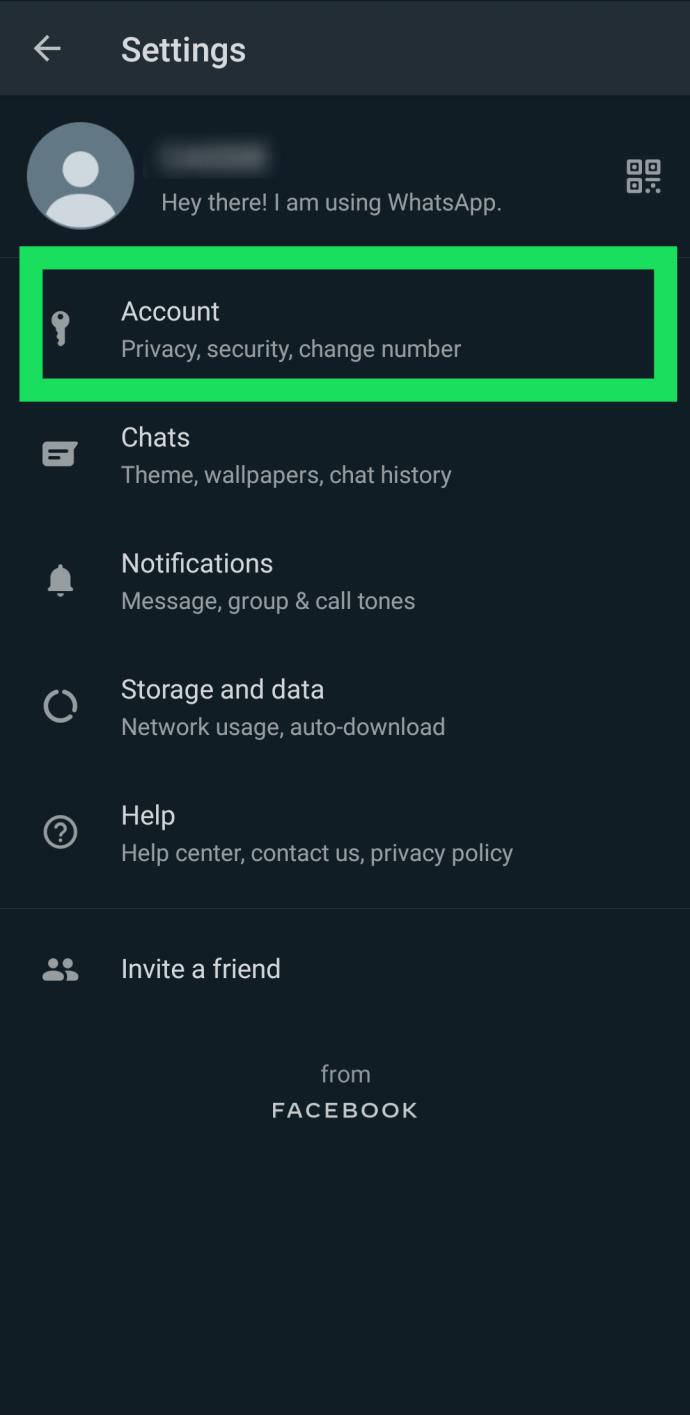
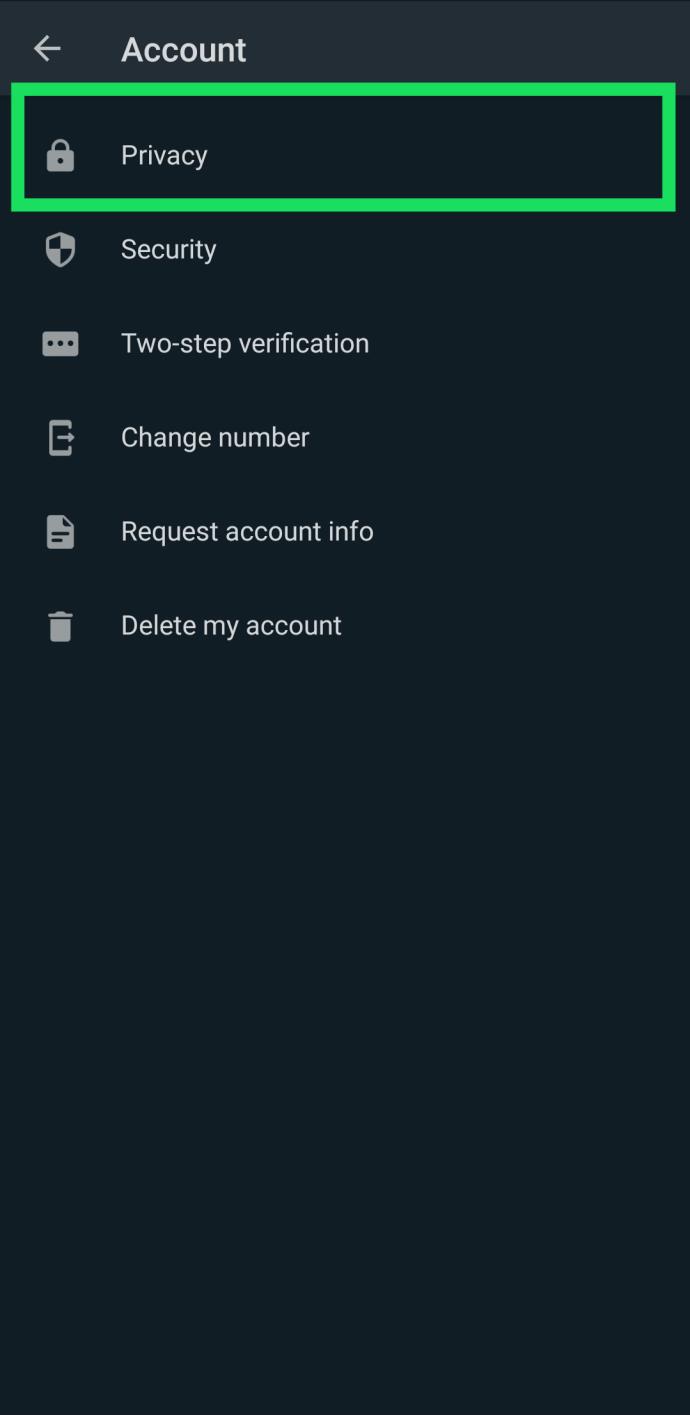
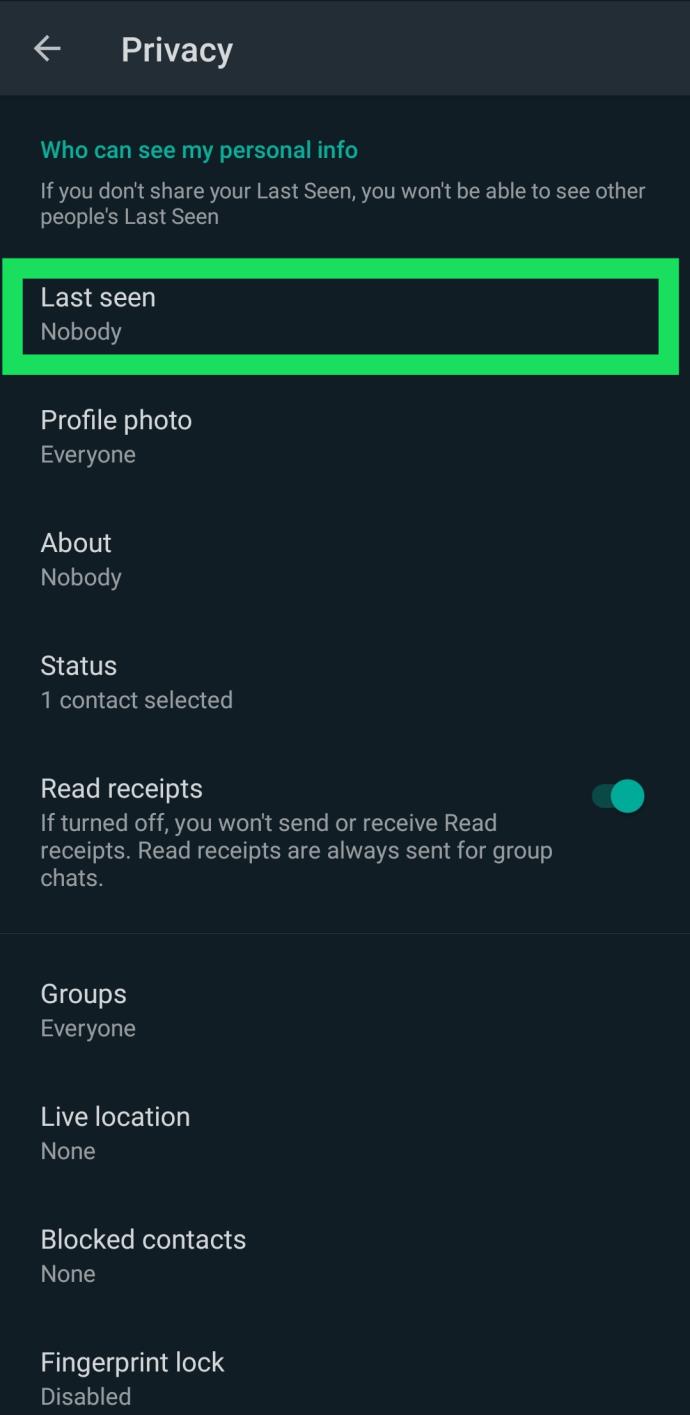
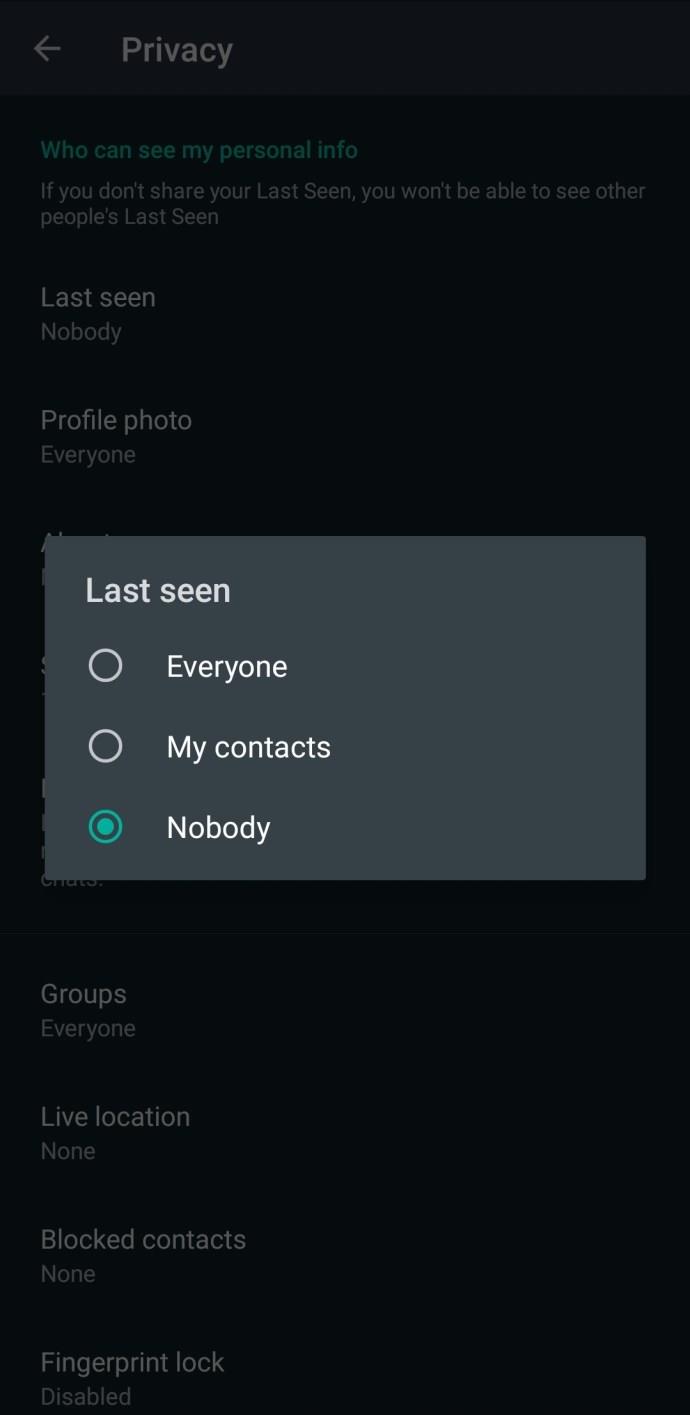
After you’ve selected one of the options above, there is no need to save. The changes will take effect immediately, and only those you’ve chosen will see your ‘Last Seen’ status.
How to Hide ‘Last Seen’ on an iPhone
iPhone users can hide their ‘Last Seen’ status from others too. Here’s how:
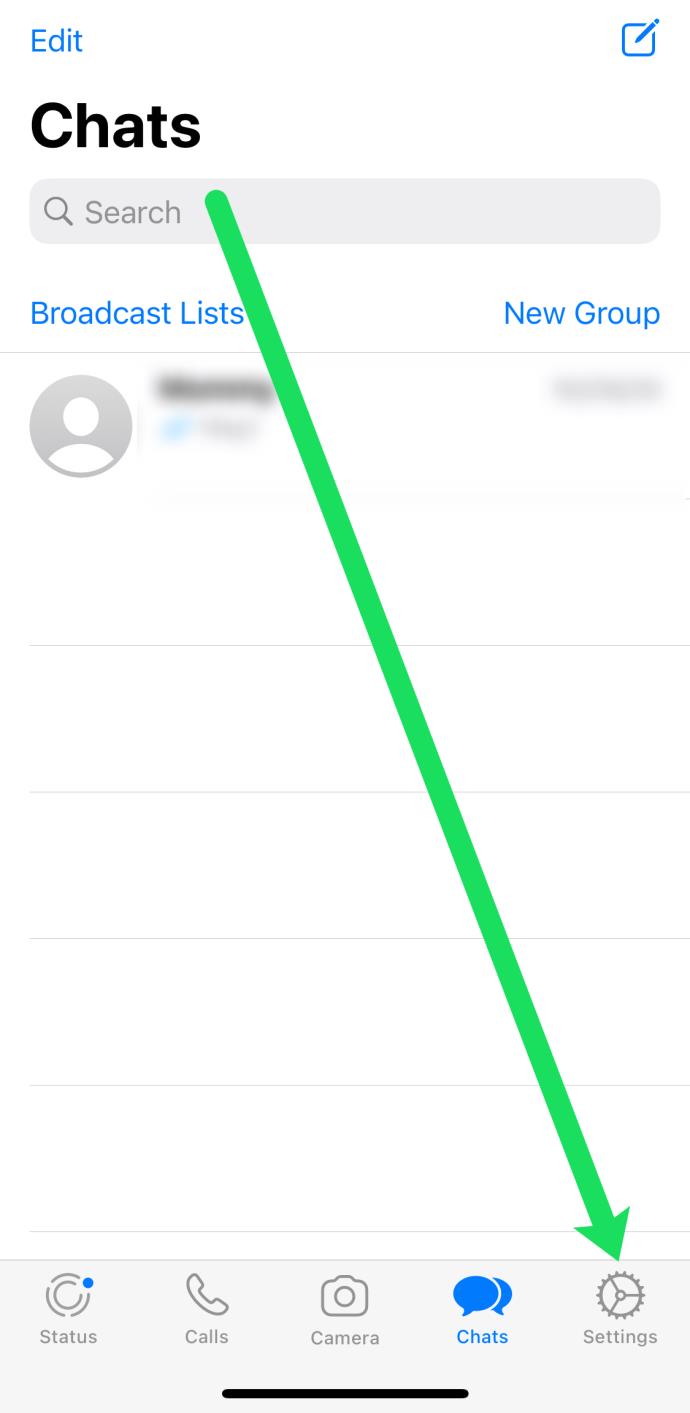
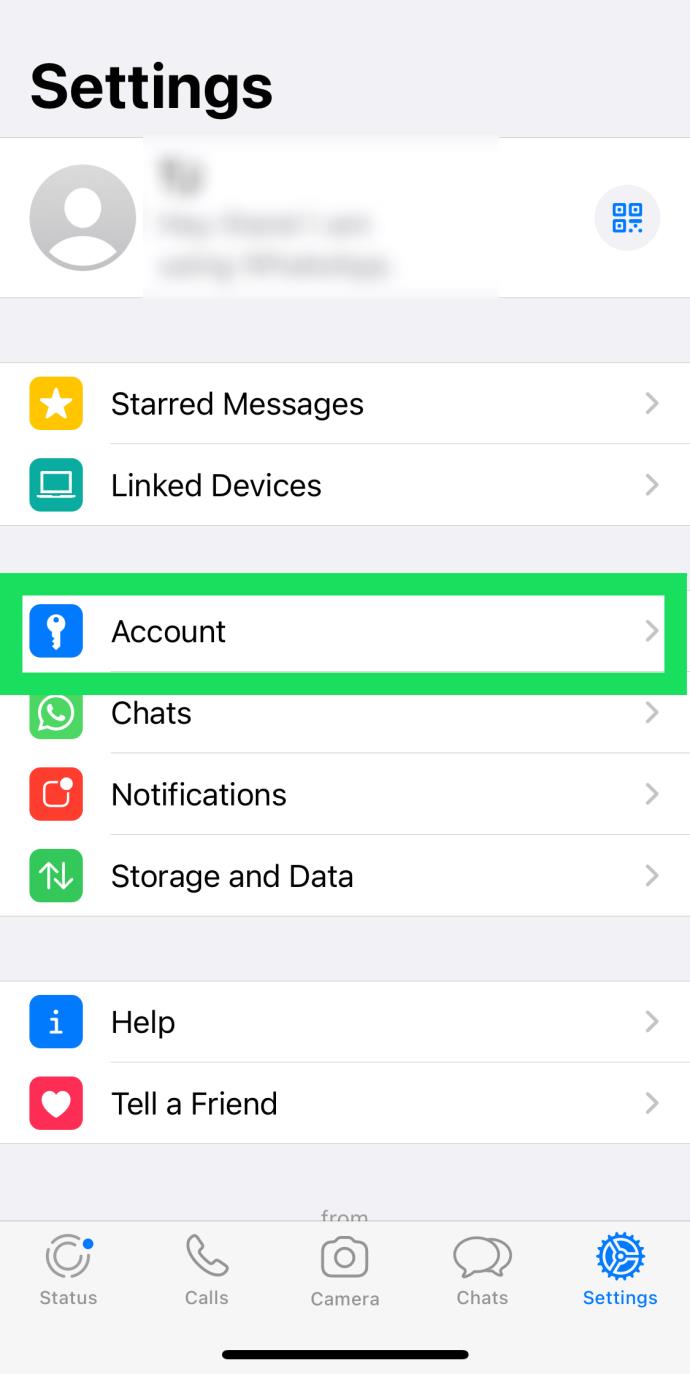

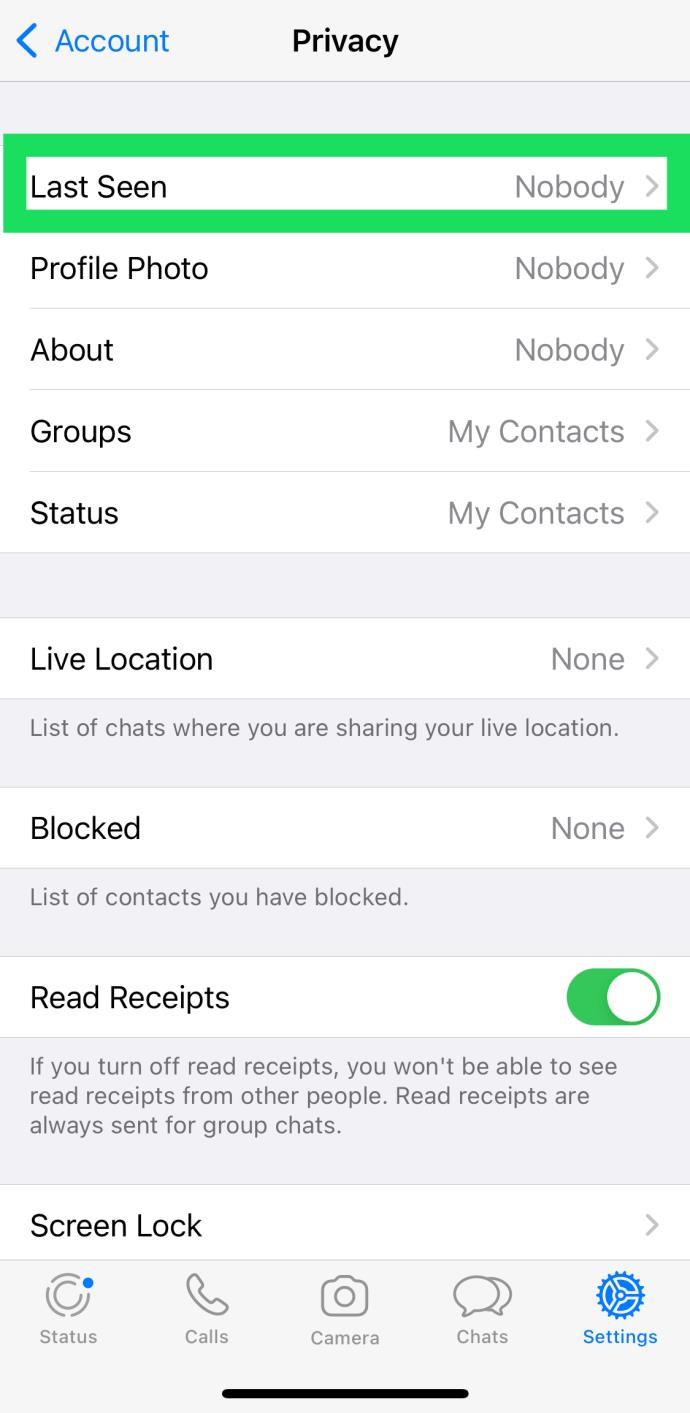
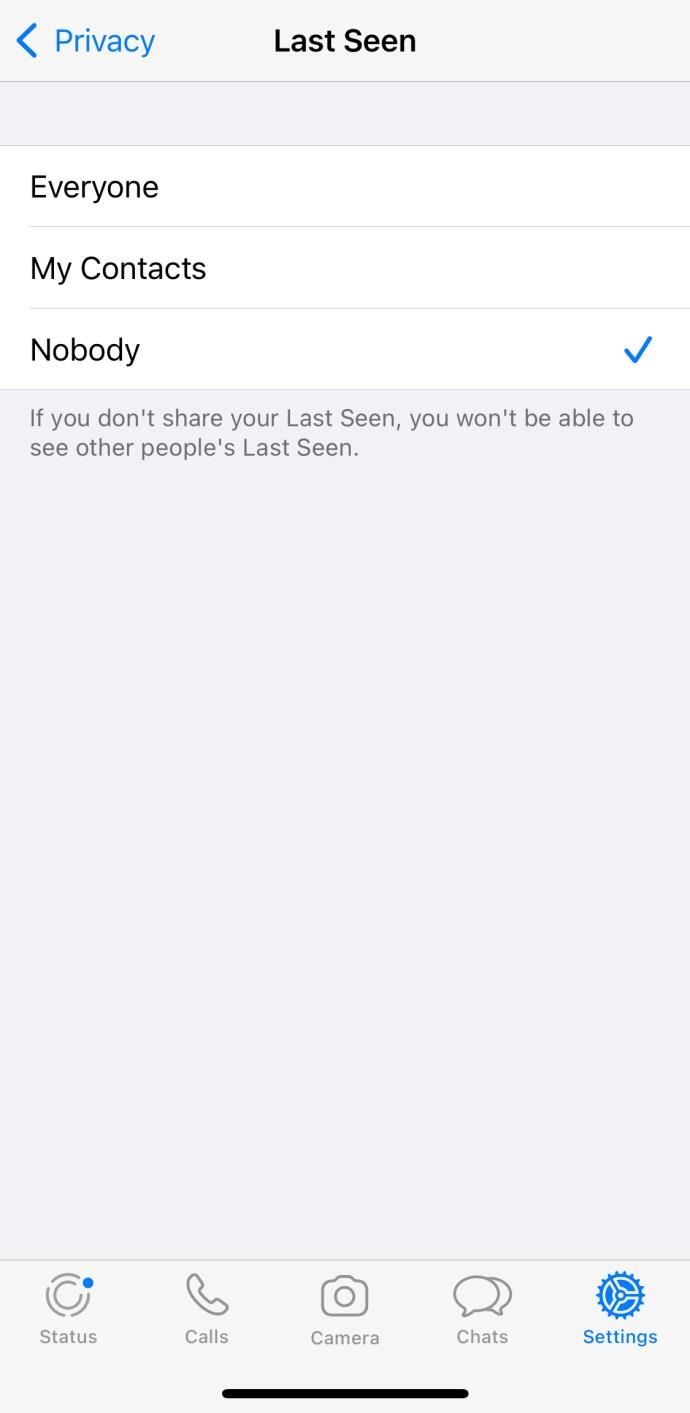
Now, only those you want can see your ‘Last Seen’ status. Keep in mind; these changes take effect immediately.
How to Hide ‘Last Seen’ on WhatsApp Web
WhatsApp is available as an application on PC and Mac computers too. Unfortunately, the desktop app doesn’t offer users the ability to hide their ‘Last Seen’ status. But, you can use WhatsApp Web and a simple workaround if you’re set on using your computer to communicate with others on WhatsApp.
Here’s what to do:
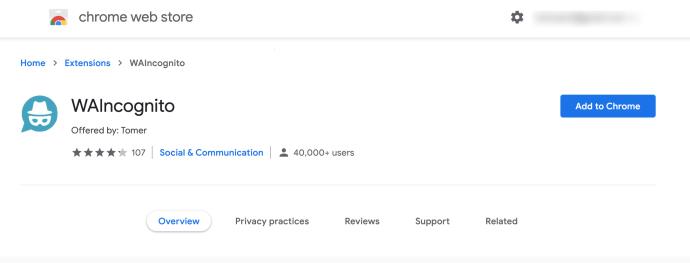
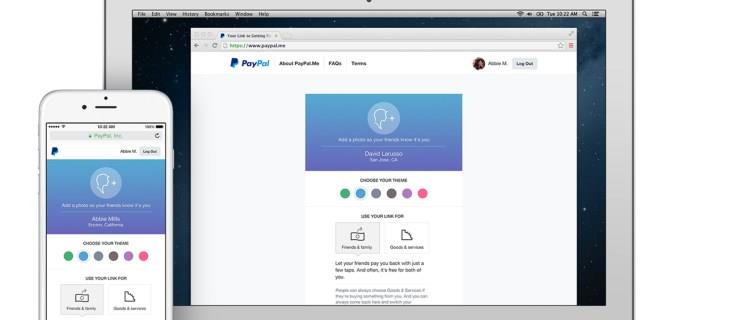
As WhatsApp so helpfully points out at the bottom of its list, turning off your “last seen” settings from all users—as in, setting it to “Nobody” will also make it so you can’t see other people’s own “last seen” information. This is a security feature built into WhatsApp to stop people from privately snooping on others’ information on the service. Basically, if you want to turn off the setting on your own device, you’ll have to accept that it isn’t going to allow you to see the information of other people. If that’s okay, you can set your display to “Nobody,” and your information will be hidden from the world.
Blocking Users
Having to completely disable your WhatsApp settings so that no one can see your online activity on the platform can be a real drag. It’s unfortunate that WhatsApp doesn’t have more customizable settings for disallowing only certain users from seeing your activity on WhatsApp, but until that feature is added to WhatsApp’s client, there’s really only one option to customize the “last seen” view on the platform. For that, you’ll have to switch to using blocking feature.
Blocking users on WhatsApp allows you to completely disable communication with another person on the platform, including turning off their ability to see your online status while simultaneously allowing you to keep your activity on for other users to see—and for you to see others’ activities. Blocking users on WhatsApp obviously comes with other repercussions outside of just stopping the user from being able to see your last online status. They also won’t be able to message you—their messages will appear as sent but never read, and you’ll never see them—see your status updates, or notice any changes to your WhatsApp profile picture.
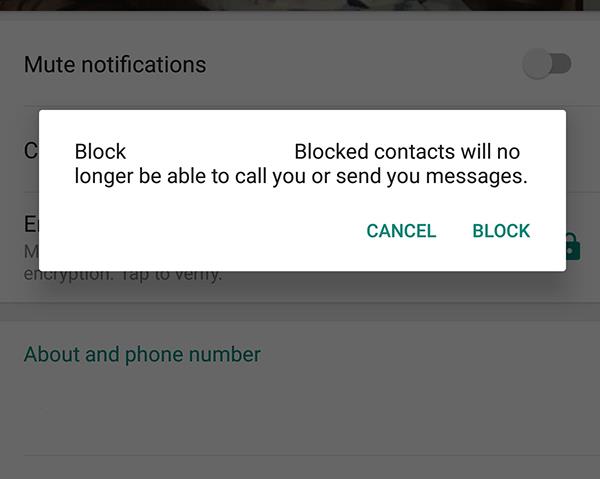
To block someone in WhatsApp, open their contact information or their message thread in the app, tap on the menu bar in the upper-right corner (on Android) or on the settings button (on iOS) and tap “Block.” You can unblock anyone at any time, so if you decide to unblock a contact, they’ll be able to reach you once more. Also, WhatsApp doesn’t notify the person you block that their account has been locked down from your device, so don’t worry about the person you block finding out that you shut them out of your account for a couple of days—they’ll never know.
Making a Secondary WhatsApp
So, as mentioned above, WhatsApp relies on your phone number to add and message contacts on the service. The app relies on your phone number despite being built as a messaging tool, not an SMS client. But at the same time, WhatsApp also gets your contacts from your device’s contacts list, despite whether or not your device uses the same phone number as your account. So, with that said, by creating an alternate WhatsApp account, we can hide the activity of your main account while allowing an alternate WhatsApp number to be used to communicate with your friends. This helps keep your activity secret from family members, friends, and anyone else you don’t want to see your own activity on the service while simultaneously not forcing you to turn off the “last seen” feature completely.
The first thing we need is an alternate phone number. Plenty of applications exist to give you new or temporary phone numbers, and our personal favorite is Google Voice. When you sign up with your Google account, you’ll be given a new number based on your location. Unfortunately, Google Voice can only be registered from the United States right now. There are guides online to help you gain access to Google Voice numbers outside the United States, as well as popular alternate number services that are based around your country of origin. If you’re outside the United States and do not have the ability to use VPN and IP masking to sign up for Google Voice, feel free to select your favorite secondary number service from any reputable site online.
Alright, once you’re armed with your new number from Google Voice or any local-based service of your choosing, you’re ready to begin setting up a new WhatsApp account. We’ll be using the Android version of WhatsApp to test out this service, so keep in mind that your mileage may vary on iOS or any other operating system.
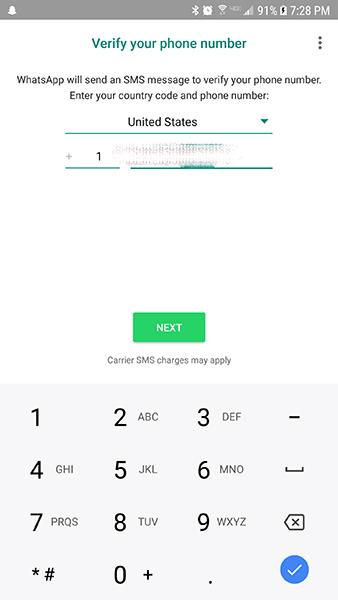
Start by logging out of your WhatsApp account completely. Alternatively, you can uninstall the application and reinstall it from the App Store or Play Store to guarantee a fresh install. Once you’ve reached the login screen for WhatsApp, WhatsApp will ask for your phone number to register your account and verify your device. Instead of entering your current phone number, enter the secondary number you created through Google Voice or your choice of secondary number service. Hit the “Next” icon, and WhatsApp will alert you to the number they’re going to verify. Make sure you entered your number correctly; once you’ve ensured the correct number has been entered into your device, hit “OK” to continue to the next step.
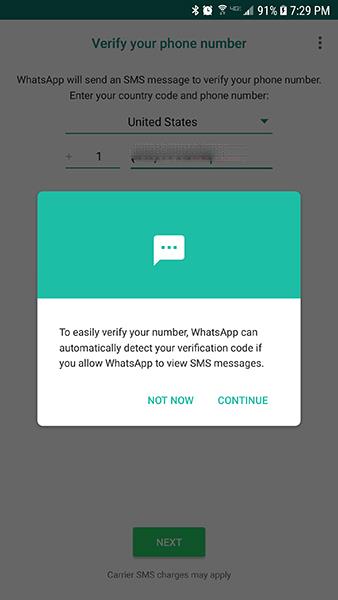
After this, WhatsApp will prompt you to automatically detect your verification code by viewing your SMS messages. While this is typically an easy method to skip manually entering a confirmation code, do not allow WhatsApp to do this. Because the text is going to your Google Voice number and not to your device’s SMS inbox, WhatsApp won’t be able to detect the code from within your phone. Instead, click “Not Now” to send the code. Once you’ve received your code inside your alternate inbox, enter the six digits into the field on your device. Once you type the sixth digit, your device will automatically verify the number. You’ll be asked to input a name for your WhatsApp account (this can always be changed later; it isn’t a username), and once this is done, you’ll go to your new inbox.
Despite using your alternate number, you can still view your contacts automatically from within the device, though take note that they won’t see your name in your account unless you give them your alternate number or you start messaging them through the service. This makes it easy to communicate with your friends in private while simultaneously keeping your activity on the account secret, which, for plenty of WhatsApp users, is the perfect way to get away from anyone who’s looking to keep an eye on when you’re active and online. It does come with a bit of hassle, especially since you can’t be logged into two WhatsApp accounts at once, but for many users, it’s one of the best ways to get around the limitations we’ve seen with the messaging platform.
In many ways, WhatsApp is one of the best messaging platforms on mobile right now. It makes it easy to see the read receipts for your messages, send images and videos to both individual and group messages, and of course, to see who is and isn’t active at any given time. Of course, you don’t always want to spread information to the world about whether or not you’re active, and that’s why WhatsApp has built settings into the app that allows you to disable the “last seen” option in your privacy settings. If that isn’t enough control for you—or if you’d rather block specific people—it’s easy to block users on WhatsApp to hide your personal information. And of course, there’s always the option to start a new WhatsApp account to mask your real identity, something that’s really easy to do when you have a free alternative number.
Frequently Asked Questions
We’ve included this section to answer more of your questions about WhatsApp privacy.
When does Whatsapp acknowledge that I was online?
WhatsApp’s ‘Last Seen’ or active status only picks up when the app is in the foreground of your operating system. This means that the system will only acknowledge that you’re online (or you were online) when the app is open on your screen and not just running in the background.
If I hide my ‘Last Seen’ status, can users still see that I’m online?
Yes. It’s important to understand that your ‘Last Seen’ status tells users the last time that you used WhatsApp while the ‘Online’ status shows that you are currently using the app. Unfortunately, if you’re actively using the app others will see that you are, in fact, online.
How to pin comments on TikTok, TikTok allows users to pin comments easily. Here's how to pin comments on TikTok videos.
Instructions for Organizing a Q&A session on Facebook, Recently, Facebook has launched the feature to create a Q&A session, when you post a question for everyone to answer.
Instructions for installing and recording videos with Likee, Likee is an application that supports extremely beautiful and impressive video recording, and is loved by many young people today. The following,
How to export the list of meeting participants in Zoom, How to take attendance on Zoom is not difficult, it even allows you to export the list of students participating in the class.
How to change font on Xiaomi, Want to create a new image for Xiaomi device? Just follow the instructions below to change the font style and size above
Instructions for creating a mirror image effect on Picsart, Picsart is an application where users only need to perform a few simple steps to transform the photo.
How to add new fonts to Microsoft Word, Can't find the font you want to use for documents in Microsoft Word? Don't worry, you can install new fonts for Word according to these steps
How to turn off the computer screen and still have the computer running, How to turn off the PC screen and still have the computer running on Win 10/11? Very simple. Here's how to turn off the computer screen
To fix the “An unexpected error occurred” issue when logging in to Facebook, you can try the following steps
Users reported that their Facebook, Messenger and Instagram accounts were suddenly logged out and could not be accessed again, both on the app and web version.
Instructions on how to take photos on Tiktok are extremely simple. Tiktok is a famous application for recording and creating short videos on social networks. However, this application also
How to find and get Instagram links, Instagram is one of the most popular and easy-to-use social networking platforms today. However, because it is designed specifically for mobile,
Instructions for locking the mouse cursor when playing games on BlueStacks, Instructions for turning on/off the mouse cursor lock feature when playing games in the BlueStacks App Player emulator.
Instructions for installing and using Faceapp using an emulator on PC, Simple and easy instructions on how to install and use the Faceapp face editing app using an emulator on PC
Instructions for creating a cover photo group on Facebook, Creating a cover photo group is a feature that helps users set Facebook cover photos with many different images (maximum of 6 photos).
Learn how to effectively use the Stochastic Indicator for technical analysis on Bubinga. Explore advanced techniques to enhance your trading strategies
Instructions for adding angel wings to photos using PicsArt, PicsArt is a photo editing application used by many people today. Today WebTech360 will introduce the article
How to turn off the Just accessed notification on Zalo. This article WebTech360 will guide you to turn off the Just accessed notification under your Zalo chat name.
Instructions for blocking and unblocking accounts on TikTok. Similar to other social networking applications, TikTok also allows users to block someone's account
How to write a long status with a colorful background on Facebook, Today, WebTech360 will introduce some steps to post a long status with a colorful background on Facebook,
